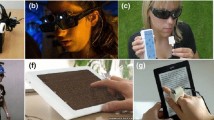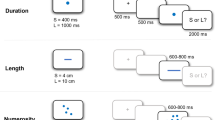Abstract
This study was conducted to determine whether elderly subjects with visual impairment differ in the performance of complex activities in daily living from those without visual impairment. The study subjects were residents in two homes for the aged in Japan, and consisted of 37 elderly people with visual impairment, and 42 elderly people, serving as controls; ages ranged from 64 to 95 years. Complex activities of the subjects were ascertained by interview using a 46-item questionnaire. The visually impaired elderly had lower performance levels for telephone use (p=0.007), shopping (p=0.049), cleaning up one’s room (p=0.001), and utilization of medical facilities (p=0.001) in instrumental ADL (IADL); for interest in TV or radio (p=0.004) and religious faith (p=0.042) in “enriching activities”; and for visiting behaviors (p<0.05) in “social role”. The performances of complex activities by the elderly with visual impairment were diminished in specific categories, but not overall, and this may be attributable to poor mobility and/or more passive attitudes in their daily activities. (Aging Clin. Exp. Res. 11: 123-129, 1999)
Similar content being viewed by others
References
Bergman B., Sjostrand J.: Vision and visual disability in the daily life of a representative population sample aged 82 years. Acta Ophthalmol. 70: 33–43, 1992.
Carabellese C., Appollonio I., Rozzini R., Bianchetti A., Frisoni G.B., Frattola L., Trabucchi M.: Sensory impairment and quality of life in a community elderly population. J. Am. Geriatr. Soc. 41: 401–407, 1993.
Rubin G.S., Roche K.B., Prasada-Rao P., Fried L.P.: Visual impairment and disability in older adults. Optom. Vis. Sci. 71: 750–760, 1994.
Salive M.E., Guralnik J., Glynn R.J., Christen W., Wallace R.B., Ostfeld A.M.: Association of visual impairment with mobility and physical function. J. Am. Geriatr. Soc. 42: 287–292, 1994.
Marx M.S., Werner P., Cohen-Mansfield J., Feldman R.: The relationship between low vision and performance of activities of daily living in nursing home residents. J. Am. Geriatr. Soc. 40: 1018–1020, 1992.
Horowitz A.: Vision impairment and functional disability among nursing home residents. Gerontohgist 34: 316–323, 1994.
Laforge R.G., Spector W.D., Sternberg J.: The relationship of vision and hearing impairment to one-year mortality and functional decline. J. Aging Health 4: 126–148, 1992.
Rudberg M.A., Furner S.E., Dunn J.E., Cassel C.K.: The relationship of visual and hearing impairments to disability: An analysis using the longitudinal study of aging. J. Gerontol. 48: M261–M265, 1993.
Lawton M.P.: Assessment, integration, and environments for older people. Gerontohgist 10: 38–46, 1970.
Verbrugge L.M., Jette A.M.: The disablement process. Soc. Sci. Med. 38: 1–14, 1994.
Lawton M.P.: Assessing the competence of older people. In: Kent D.P. (Ed.), Research Planning and Action for the Elderly: The Power and Potential of Social Science. Behavioral Publications, New York, 1972, pp. 122–143.
Lawton M.P.: Environment and other determinants of well-being in older people. Gerontohgist 23: 349–357, 1983.
Avlund K., Schultz-Larsen K.: What do 70-year-old men and women actually do? And what are they able to do? From the Glostrup survey in 1984. Aging Clin. Exp. Res. 3: 39–49, 1991.
Bowling A.: Quality of life. In: Ebrahim S., Kalache A. (Eds.), Epidemiology in Old Age. BMJ Publishing Group, London, 1996, pp. 221–227.
Barberger-Gateau P., Dartigues J.F., Letenneur L.: Four instrumental activities of daily living score as a predictor of one-year incident dementia. Age Ageing 22: 457–463, 1993.
Kobayashi T., Hariguchi S., Nishimura T., Takeda M., Fuku-naga T., Inoue O., Tanaka S., Kondo H., Niigawa H.: A new clinical scale for rating of mental states and activities of daily living of the elderly (NM scale and N-ADL). Rinsho Seishin Igaku (Jpn. J. Clin. Psychiat.) 17: 1653–1668, 1988. (in Japanese)
Japan International Corporation of Welfare Services (JICWELS): Social Welfare Administration in Japan. Textbook for the 14th Study Programme for the Asian Social Welfare Administrators. Japan International Corporation of Welfare Services (JICWELS), Tokyo, 1996.
Lawton M.P., Brody E.M.: Assessment of older people: Self-maintaining and instrumental activities of daily living. Gerontohgist 9: 179–186, 1969.
Law M.: Evaluating activities of daily living: Directions for the future. Am. J. Occup. Ther. 47: 233–237, 1992.
Lawton M.P.: Aging and performance of home tasks. Hum. Factors 32: 527–536, 1990.
Berberger-Gateau P., Chaslerie A., Dartigues J.F., Com-menges Gagnon M., Salamon R.: Health measures correlates in a French elderly community population: The PAQUID study. J. Gerontol. 47: S88–S95, 1992.
Berberger-Gateau P., Commenges D., Gagnon M., Letenneur L., Sauvel C., Dartigues J.F.: Instrumental activities of daily living as a screening tool for cognitive impairment and dementia in elderly community dwellers. J. Am. Geriatr. Soc. 40: 1129–1134, 1992.
White R.W.: Motivation reconsidered: The concept of competence. Psychol. Rev. 66: 297–333, 1959.
SAS Institute Inc.: SAS/STAT™ User’s Guide, release 6.03 ed. SAS Institute Inc., Cary (NC), 1988.
Dudley N.J.: Aids for visual impairment. BMJ 301: 1151–1153, 1990.
Felson D.T., Anderson J.J., Hannan M.T., Milton R.C., Wilson P.W., Kiel D.P.: Impaired vision and hip fracture. The Fram-ingham Study. J. Am. Geriatr. Soc. 37: 495–500, 1989.
Grisso J.A., Kelsey J.L., Strom B.L., Chiu G.Y., Maislin G., O’Brien L.A., Hoffman S., Kaplan F.: Risk factors for falls as a cause of hip fracture in women. N. Engl. J. Med. 324: 1326–1331, 1991.
Gerson L.W., Jarjoura D., McCord G.: Risk of imbalance in elderly people with impaired hearing or vision. Age Ageing 18: 31–34, 1989.
Maeda A., Nakamura K., Otomo A., Higuchi S., Motohashi Y.: Effect of body support on standing balance in the visually impaired elderly. Arch. Phys. Med. Rehabil. 79: 994–997, 1998.
Health and Welfare Statistics Association: Health and Welfare Statistics in Japan. Health and Welfare Statistics Association, Tokyo, 1996. (in Japanese)
Branch L.G., Horowitz A., Carr C.: The implications for everyday life of incident self-reported visual decline among people over age 65 living in the community. Gerontohgist 29: 359–365, 1989.
Avlund K.: Methodological challenges in measurements of functional ability in gerontological research. A review. Aging Clin. Exp. Res. 9: 164–174, 1997.
Heinemann A.W., Colorez A., Frank S., Tailor D.: Leisure activity participation of elderly individuals with low vision. Gerontologist 28: 181–184, 1988.
Wulsin L.R., Jacobson A.M., Rand L.I.: Psychosocial correlates of mild visual loss. Psychosom. Med. 53: 109–117, 1991.
Greig D.E., West M.L., Overbury O.: Successful use of low vision aids: Visual and psychological factors. J. Visual Im-pairm. Blindn. 80: 985–988, 1996.
Fitzgerald R.G., Ebert J.N., Chambers M.: Reactions to blindness: A four-year follow-up study. Percept. Mot. Skills 64: 363–378, 1987.
Tielsch J.M., Javitt J.C., Coleman A., Katz J., Sommer A.: The prevalence of blindness and visual impairment among nursing home residents in Baltimore. N. Engl. J. Med. 332:, 1995.
Maruo T., Ikebukuro N., Kawanabe K., Kubota N.: Changes in causes of visual handicaps in Tokyo. Jpn. J. Ophthalmol. 35: 268–272, 1991.
Author information
Authors and Affiliations
Rights and permissions
About this article
Cite this article
Nakamura, K., Otomo, A., Maeda, A. et al. Evaluation of complex activities in daily living of elderly Japanese with visual impairment. Aging Clin Exp Res 11, 123–129 (1999). https://doi.org/10.1007/BF03399651
Received:
Accepted:
Published:
Issue Date:
DOI: https://doi.org/10.1007/BF03399651




